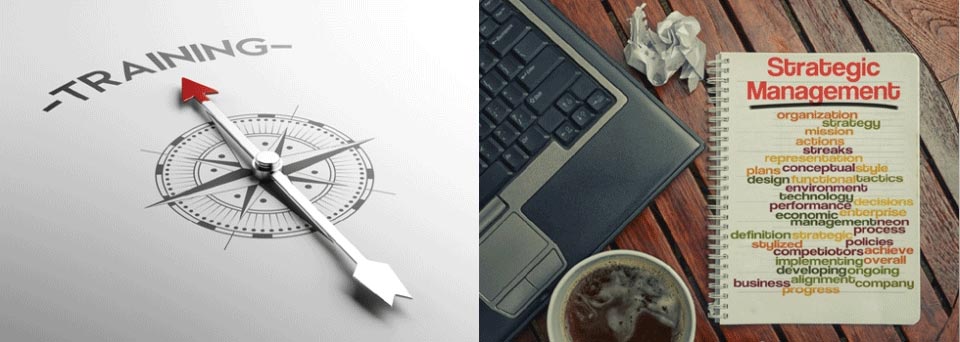Abstracts
Global e-learning leader Comm-Lab introduced a unique corporate training module for its employees this year aided through presentations and webinars. The trend of operational teams working in silos needed to be eased out and thus compulsory weekly knowledge sharing sessions were initiated. This led to improved synergy across functional teams and development of a more rounded, holistic learning among the employees. There was even an MCQ based testing at the end of the sessions and on average employees secured above 60% scores.
The 25 most Ruthless Leaders of all Time
Business leaders often model themselves on the deeds of historical rulers, many of whom were utterly ruthless in their times. Some of these leaders in time gone by have conducted deeds which are still applied by management consulting practitioners albeit in less gory fashion. Going way back in time there was Qin Shu Huang who united all of China. Then there was Caligula who ruled over the Roman Empire. The same empire met its demise at the hands of Attila the Hun. The ancient times’ list is completed by Wu Zetian. The Middle Ages starts with possibly the most ruthless of the lot- Genghis Khan. Tomas de Torqumada and Czar Ivan IV often known as ‘the Terrible’ come next on the list. The next three characters are famous for providing fearsome nicknames- Timur as Tamerlane, Queen Mary as Bloody Mary and Vlad III, known as Dracula. Countess Elizabeth, Maximilien Robespierre and Mehmet Talat Pasa next find mentions. Kind Leopold II of Belgium was known for his ruthless policies and actions in Africa. The modern times get started by the likes of Vladimir Lenin, Benito Mussolini, Joseph Stalin, Khorloigiin Choibalsan and Francisco Franco. Of course no such list will be complete without Adolf Hitler. Closer to our times, villains mentioned include Mao Zedong, Pol Pt, Idi Amin and Augusto Pinochet.
8 Habits of People who always have Great Ideas
Some individuals stand out with their business innovations but they all possess some common characteristics. Inspiration is sought by them in places none apparently exist. Their decision making process I usually slow. Their motivation levels are high. Any problem they face, they go back to the drawing board. Risks are ingrained as part of their decision making process. They keep trying new ideas. They are also good at connecting the dots between seemingly disparate experiences. Curiously, they believe in supernatural occurrences such as magic.
Software AG: the Future is Digital Platform- based Co-Innovation
A year on from unveiling its maiden package, Software AG has released its second version of its digital business platform. This one is specifically aimed at easing operations for public sector enterprises. It provides a dedicated digital marketing solutions kit along with cloud support. There is an IT architecture planner based around ARIS GRC software. The trend of companies reversing the process of outsourcing of IT operations has picked up since GE took the step.
3 Ways to Create the Company Culture you Want
Creating a company culture akin to the requirements of the entrepreneurs has always been a challenge. A management consulting publication has provided us with three ways in order to achieve the same. First of all the firm mu realize that it is part of a broader social group and thus communication with outside world beyond the organization is necessary. Also the company culture must be built from scratch and not improvised from an already existing culture prevalent in some other firm. Finally the onboarding process for new recruits must be smoothed in such a ways that the personnel are on solid footing from day one.
5 Essential Principles for Understanding Analytics
Sound understanding of analytics has become essential to deriving best results out of digital marketing. However, some principles need to be followed to understand this art the best. One needs to be aware and frame the analytical problem accordingly. The team must involve people who possess sound quantitative skills. A background understanding of data & its derived implications is necessary before plunging in. Even analytics have variations and this must be well grasped. Finally, the marketer needs to work out how best to fit business analysis for internal organizational purposes and which part can be utilized for the external environment.
The Best Leaders are Constant Learners
The great Formula 1 racer Juan Manuel Fangio once miraculously got saved from what would have been a life threatening injury only because he showed the willingness to learn from a chance piece of information he stumbled upon. Similarly the best of business leaders need to constantly learn by scanning information from across the world in a process termed as searchlight intelligence. Beyond corporate training, this comes from Personal Knowledge Mastery (PKM). The leaders need to seek such information, sense its availability and finally share with their respective teams.
What Accenture means when it talks about ‘multi speed IT’
Management consulting giant Accenture has come up with the concept of ‘multi speed IT’ by which several IT processes will run parallel, thus best aiding top notch mobile apps to run smoothly. In fact, market research carried out by Accenture reflects that nearly three-fourths of those surveyed feel that this concept can be worked out, yet four-fifths of the sample do not yet possess confidence in firms’ ability to implement the same now. This is where the CIOs role becomes important as he/she has to fix objectives in such manner.
Is Internal Customer Service a Positive or a Predicament at your company
An internal customer is typically someone who is either on company payroll or is a vendor delivering service to the firm. Business research has proven that internal customer servicing remains a positive step as it reflects the service mentality of the firm. It also helps the constant flow of communication which is the lifeline of any business. Inter-department cooperation also improves as a positive internal customer servicing will mean that employees can get the adequate help and information required at specific time periods.
The Five Keys to Successful Change
Business innovation is not an overnight rectification, it requires steps to be followed in sequence. Change needs to be planned accordingly. Top leadership must reflect this constant change. The change needs to be managed in a coordinated way across the organization. Also the innovation must not be a one-time movement, but once implemented, needs to be maintained. This entire movement needs to be evaluated like portfolio management. Some organizations have thus started a change planning toolkit in order to micromanage all these steps.
[csblink]



